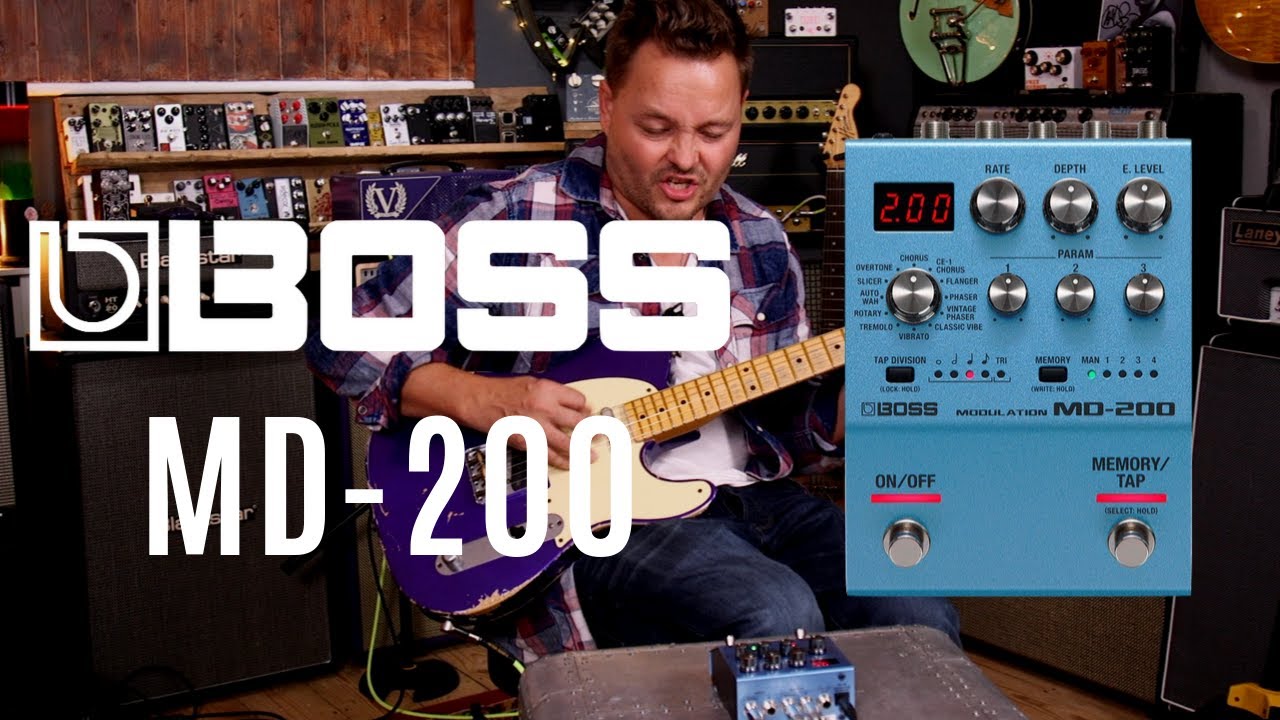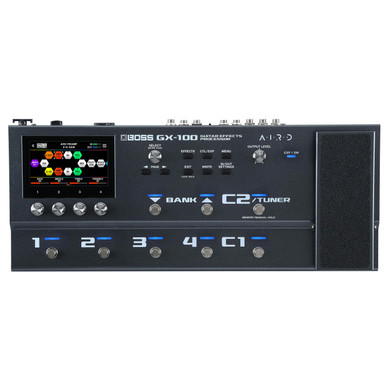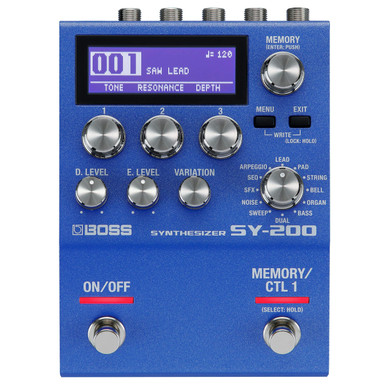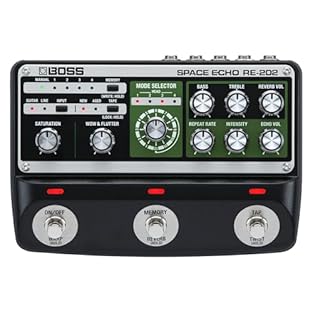Just the latest Modulation Guitar Effect Pedal Video in 17:46 – The Boss MD-200 Modulation Pedal | 12 Awesome Modulation Effects in One | Tone Tasting

Just Video – The Boss MD-200 Modulation Pedal | 12 Awesome Modulation Effects in One | Tone Tasting
BOSS DS-1 Distortion Pedal, Classic Tones for All Types of Music, The benchmark in Guitar distortion,Orange
11% Off £74.00 £66.00
Legendary distortion used by guitarists everywhere since 1978. BOSS’s first distortion pedal defined a bold new sound, delivering hard-edged attack and smooth sustain that’s been a staple of players for generations. The classic DS-1 tone is behind the signature sounds of numerous rock legends, and is ready to fuel your own signature sound today. Hard-edged attack remains clear even at maximum distortion settings, ideal for heavy rhythms and cutting solos. Works great as a booster at low distortion settings. Unique tone control offers a wide range of sound shaping. Doesn’t mask the unique sound characteristics of different guitars, pickups, and styles. Turning down the guitar’s volume cleans up the tone without introducing muddiness. BOSS five-year warranty.
BOSS Md-500 Modulation Pedal, 12 Modes And 28 Modulation Types, Studio-Level Sound with First-In-Class 32-Bit Ad/Da, 32-Bit Floating Point Processing, And 96 Khz Sampling Rate
£329.00
Sampling Frequency: 96 kHz AD/DA Conversion: 32 bits Processing: 32-bit floating point 12 modes Memory: 198 (99 banks x 2 [A] [B]), 297 (99 banks x 3 [A] [B] [C])
Boss BOSS RE-202 Space Echo Digital Delay Guitar Effect Pedal
7% Off £357.00 £332.90
Authentically recreates the sound and behavior of the legendary Roland RE-201 Space Echo. Classic multi-head tape echo sound with expanded delay time. Original three-head configuration plus additional tape head for 12 unique echo combinations. Independent stereo reverb section with original spring reverb type plus hall, plate, room, and ambience. Saturation control for adding magnetic tape compression and preamp coloration. Wow & Flutter control for introducing varying levels of natural tape modulation. Choose between new and aged tape conditions. Selectable input modes for optimum performance with instruments and line-level gear. Warp and Twist effects with footswitch control. Select between the unprocessed analog dry signal or the modeled sound of the original Space Echo preamp.
Valeton Guitar Pedal Multi-Effects Processor Guitar Bass Amp Modeling IR Cabinets Simulation with FX Loop MIDI I/O Expression Pedal Stereo OTG USB Audio Interface GP-200JR
£199.00
240+ Built-in Guitar/Bass/Acoustic Effects with 140 Legendary Amplifiers&Cabinets Simulations and 100 Renowned Stompbox Effect Pedals; Supporting 20 3rd Party IRs Storage; 24-bit 44.1kHz Signal Processing 100 Built-in Drum Rhythms and 180 Seconds Looper, 255 Presets, Equipped with the New-Gen HD Modeling Technology, Adjustable Signal Chain with Maximum 11 Simultaneous Effect Blocks 4.3-inch TFT color LCD screen with user-friendly UI, Line, and Headphone I/O for various connection needs, FX loop for inserting external stompboxes, MIDI I/O and two EXP jacks for connecting external controllers USB Type-C Connection Audio Interface with Stereo 6-in 4-out Audio Streaming, Support OTG function for directly Connecting to iOS/Android Mobile Devices Multi Language User Interface (Hardware) with Free Mac/Windows Software for Sound Editing and Presets Managing
Valeton Guitar Pedal Multi-Effects Processor Guitar Bass Amp Modeling IR Cabinets Simulation with FX Loop MIDI I/O Expression Pedal Stereo OTG USB Audio Interface Red GP-200R
£295.00
140 Built-in Guitar/Bass/Acoustic Effects with 45 Legendary Amp Models and 40 carefully selected IR Cabinet Simulations, 24-bit 44.1kHz Signal Processing 100 Built-in Drum Rhythms and 90 Seconds Looper, 198 Presets, Adjustable Signal Chain with Maximum 9 Simultaneous Effect Blocks Powerful HD Digital Modeling System delivering Organic Living Tone, 3rd Party IR Support (20 User Slots) for creating Custom Unique Sounds USB Audio Interface with Stereo Audio Streaming, Support OTG function for directly Connecting to iOS/Android Mobile Devices Multi Language User Interface (Hardware) with Free Mac/Windows Software for Sound Editing and Presets Managing




![Sampling Frequency: 96 kHz AD/DA Conversion: 32 bits Processing: 32-bit floating point 12 modes Memory: 198 (99 banks x 2 [A] [B]), 297 (99 banks x 3 [A] [B] [C])](https://m.media-amazon.com/images/I/416A1iZK6eL._SL313_.jpg)


